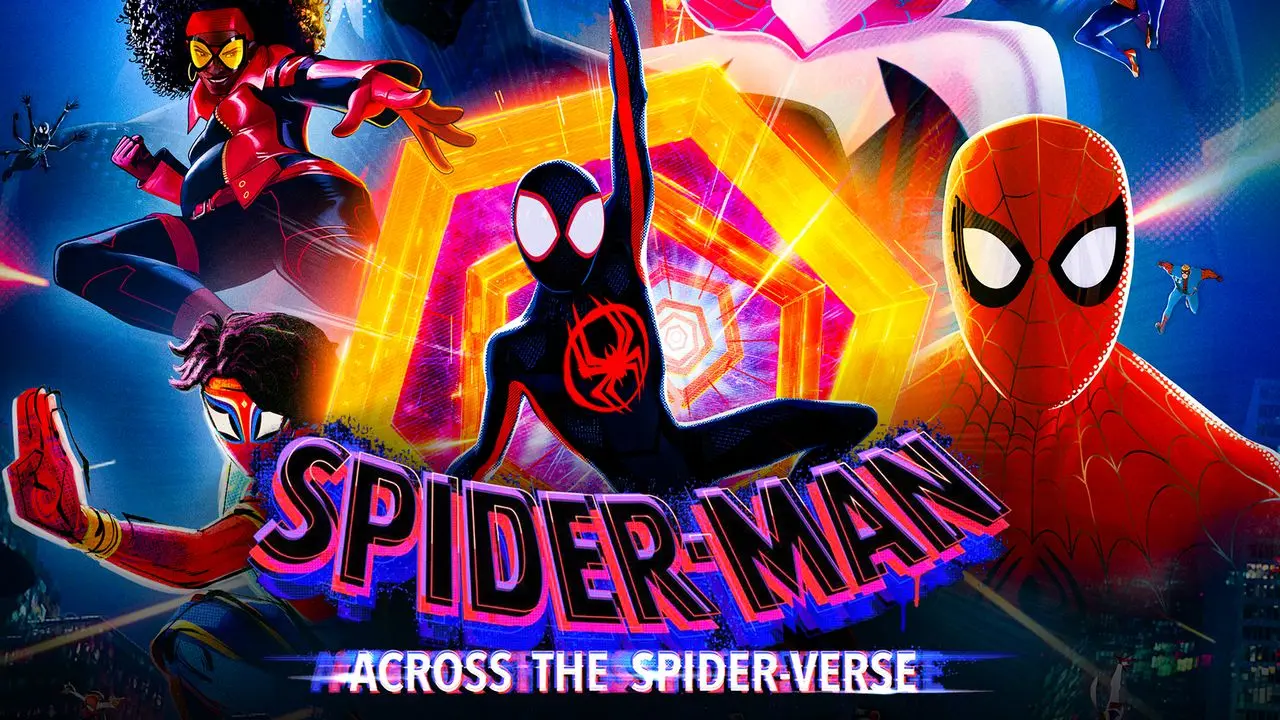Sony Picture’s animated Spider-man: Across the Spider-verse came out recently to near universal critical and commercial acclaim. Continuing in the steps of its predecessor, 2018’s Spider-man: Into the Spider-verse, Across the Spider-verse continues to dazzle fans with its moving story, detailed character, and breathtaking animation. While it may not be groundbreaking to sing the many praises of this soon to be trilogy, these movies have had a far more profound impact on the film industry than just becoming the new high-water mark for animated superhero films.
Spider-man: Into the Spider-verse represents a fundamental shift in the world of big budget animated features. The unorthodox, colorful, and energetic animation of the film eschewed the common trends of animation at the time in favor of a style that deliberately harkens back to old comic book panels.
The film utilized overt techniques, such as text bubbles and visualized onomatopoeia, and more subtle techniques, like the Ben-Day dot method of shading, to immerse the audience in the tone and energy of comic books. In 2018 this move towards less realistic and more abstract animation style was seen as a massive risk, as it came in stark contrast to what had been the dominant style of big budget animation for close to two decades, a style set by the last movie to have made such a fundamental shift in animation — Pixar’s Toy Story.
Toy Story was release in 1995, at the height of the “Disney Renaissance”, defined with such hits as Aladdin, The Little Mermaid, and The Lion King. The animated features of the 90’s were defined by the style of these movies, which consisted of clean and colorful 2D animation, with some computer generated (CG) elements.
Pixar blew that up with its first feature, Toy Story, an entirely CG film that, despite the fantastical nature of the story, aimed for a more realistic visual aesthetic to portray its world and characters. The film was a massive success, and placed Pixar in a lofty position atop the world of animated features, further cemented by Pixar’s subsequent success as it continued to hone CG realism.
As the Disney Renaissance era came to a close, new animation studios such as DreamWorks and Blue Sky started taking inspiration from Pixar’s style, finding lots of success along the way. This prompted even established studios like Disney to adopt the style as well, setting an animation landscape where a big budget film that didn’t utilize the Pixar aesthetic was the exception.
In the first 20 years of the Academy Award for Best Animated Feature, only three movies eschew the “Pixar Effect” — 2001’s Spirited Away, 2005’s Wallace & Grommit, and 2018’s Into the Spider-verse. With Into the Spider-verse becoming both a massive financial and critical success with such a daring style, the film proved that audiences were receptive to films outside of the Pixar style.
Since then, a few films have aped the style of Into the Spider-verse to more financial and critical success, including 2021’s The Mitchell’s vs the Machines, and 2022’s Puss in Boots: The Last Wish. But even now, these remain notable exceptions in big-budget animation.
All this sets the scene for the release of Across the Spider-verse, coming out within 12 days of Pixar’s newest release, Elemental. Even before the release of these movies, the public discourse around the films was very different.
Across the Spider-verse, a long-awaited sequel to a popular film, was highly anticipated. Elemental, on the other hand, despite being another movie from one of the modern era’s most popular and consistent animation studios, was already being written off as generic before it even came out.
This early buzz was confirmed with Across the Spider-verse opening at $120 million, while Elemental only earned around $30 million. Audiences have shown a clear preference for Across the Spider-verse, even when directly up against one of the industry’s heavy hitters. This could be explained as Across the Spider-verse being part of a popular franchise, but Pixar’s Lightyear, a spin-off of Pixar’s most popular franchise, was also a disappointment, earning a disappointing $50 million.
Will Pixar, the long-reigning leader, be able to pivot from its signature style? Likely big-budget animation will be forced to shift; with the recent success of the Spider-verse movies, and DreamWork’s experimentation with Puss in Boots: The Last Wish doing well both critically and financially, the new norm is almost guaranteed to be modeled on a more abstract style of animation that harkens back to the physical media first championed by the ascendant Spider-verse franchise.
Discover more from Post Alley
Subscribe to get the latest posts sent to your email.

Funny how it’s Marvel that’s toppled Pixar from its perch when both are owned by Disney, another famous animation studio. Elementals underperformed at the box office so I’m curious what exactly Pixar will do with its next release.